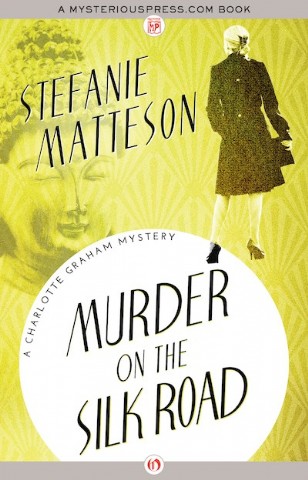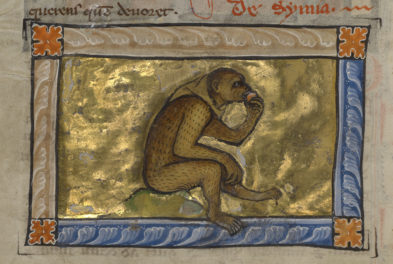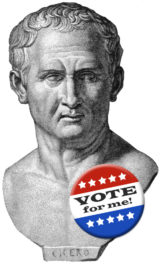During the 1980s and early ‘90s, I made many trips to Dunhuang. The purpose of these visits was to examine the art in the caves to complement my research on what are called bianwen (“transformation texts”), the earliest vernacular narratives in Chinese. One of the ways I supported those trips was occasionally to take groups from organizations like the Smithsonian Institution, serving as their academic guide and interpreter. When the members of such groups got to know me and were impressed by how familiar I was with the caves and their contents, they started calling me “Dunhuang Vic,” and that moniker stuck.
In those days, it was not easy to get to the Dunhuang caves. There was no airfield nearby, so you had to take a train that went from Lanzhou all the way up the Gansu Corridor (now they call it the Hexi Corridor) for a thousand kilometers (620 miles). The trains had steam engines (no electric engines yet), so I remember very clearly that, as we wended our way up the long corridor—it took at least a day and a night—the smoke and soot would come billowing into the cars, coating everything, including shirts, antimacassars, hair, and lungs with blackness. Naturally, in summer it was so hot that you had to keep the windows open, otherwise you would melt in a pool of perspiration. In winter it was better; you kept the windows shut so you wouldn’t freeze to death, and that way not so much smoke got into the cars.
For some reason, the railroad did not go through or even near the town of Dunhuang; the station was a considerable distance away, about two hours’ drive. I asked the locals why they didn’t bring the line closer to Dunhuang, and they blamed it on the Russian engineers who had helped with the construction of the line. The same arrangement obtained for other stations on the line farther west in Xinjiang.
I recall one harrowing episode when I was in a jeep on the way from the train station to the town of Dunhuang (I was not with a group that time). Suddenly a flash flood started swirling down from the mountains and washed away the road, which had been built up above the pebbly desert floor, in front of us. It was extremely difficult to get our jeep turned around and headed back to the train station. Once there, we went by a roundabout way to Dunhuang (I think we passed by Yulin Caves, which was actually a plus, since exceedingly few outsiders got to see them in those days).
Of course, the difficulties of getting to Dunhuang in the 1980s were nothing like they were in the early 1900s, when Aurel Stein and Paul Pelliot visited the Mogao caves. Then it would take months to reach them, and explorers would have had to travel by horse, foot, camel, and cart.
For twenty years, from the early 1970s when I began my graduate studies to the early 1990s when I shifted my interest to the desiccated mummies of the Taklamakan Desert in the Tarim Basin, my whole existence was deeply intertwined with Dunhuang. This led to one of the most peculiar episodes of my life, which I shall here recount in brief.
There was a writer named Stefanie Matteson who started calling me and asking me all sorts of questions about Dunhuang. That probably was around the late ‘80s or early ‘90s. She called me several times and talked to me for hours. She wanted to know all sorts of details about the caves at Mogao. The arrangement back then was very different from what it has been for the last twenty years or so since large numbers of tourists began to visit the caves. There were few buildings out near the caves, and the ones that were there were very simple, countryside structures.
Ms. Matteson wanted to know exactly where the manuscripts were found (Cave 17, also known as the Library Cave), what could be seen in the distance if you looked out from the cave entrance toward the east (Sanwei Mountains), what was above Cave 17, and so on and so forth. Day after day, she picked my brain, and I really don’t like to speak on the telephone! All I knew is that she seemed very earnest, and I thought that I’d help spread the word about Dunhuang, of which I was so passionately fond, by telling her as much about the area as I could. Finally, the calls came to an end and I forgot all about Ms. Matteson.
A couple of years later, a few friends began to look at me in a quizzical manner. I remember one in particular, Sue Naquin, who taught Chinese history at Penn. One day Sue came up to me and said, “Victor, have you ever read Murder on the Silk Road by Stefanie Matteson?” I replied that I hadn’t, to which Sue responded, “You should. I think it’s about you.”
There was no Amazon back then, and I couldn’t readily find the book in Philadelphia. Fortunately, I was going down to Washington, D.C., probably to attend a meeting of the Association for Asian Studies. There was a bookstore near Dupont Circle that specialized in mystery novels. I asked if they had any books by Stefanie Matteson, and one of the clerks led me over to a section of the store where they had a whole slew of them. They were called the Charlotte Graham Mysteries, and Murder on the Silk Road was one in that series. I forked over a few dollars to buy the paperback (I remember that it had a green cover [later editions have a yellow cover]), put it in my pocket, and walked out the door.

An aging actress pursues a murderous philologist in this mystery set in the cave temples of Dunhuang.
On the train ride back to Philadelphia, I read the book but didn’t finish it. As I turned the pages, I became deeply suspicious of one of the main characters, who seemed to shared my fascination with everything about Dunhuang, especially the manuscripts. Not only did that character resemble me in certain ways—his name was Victor Danowski! The more I read, though, the less I liked this fellow, because he seemed to be possessed by a demon that compelled him to find more manuscripts that were reported to have been located somewhere in the Mogao caves.
Victor Danowski was in a race with others to obtain the manuscripts that were rumored to have recently surfaced. Finally, as the tension continued to build, one of the characters competing with Victor Danowski to seize the newly discovered manuscripts was found dead!
Protagonist Charlotte Graham set out to solve the mystery of whodunit. Well, it wouldn’t take a Sherlock Holmes to figure out the culprit, because Victor Danowski was so obsessed with the manuscripts that he would have done anything to get his hands on them. When the novel reached the point where the amateur sleuth fingered Victor Danowski as the murderer, I set it aside. I never did finish it.
I’d much rather be known as “Dunhuang Vic.”
______
Victor H. Mair visited the Getty in May to deliver the keynote address at a symposium on the occasion of the exhibition Cave Temples of Dunhuang: Buddhist Art on China’s Silk Road.

See all posts in this series »





Comments on this post are now closed.